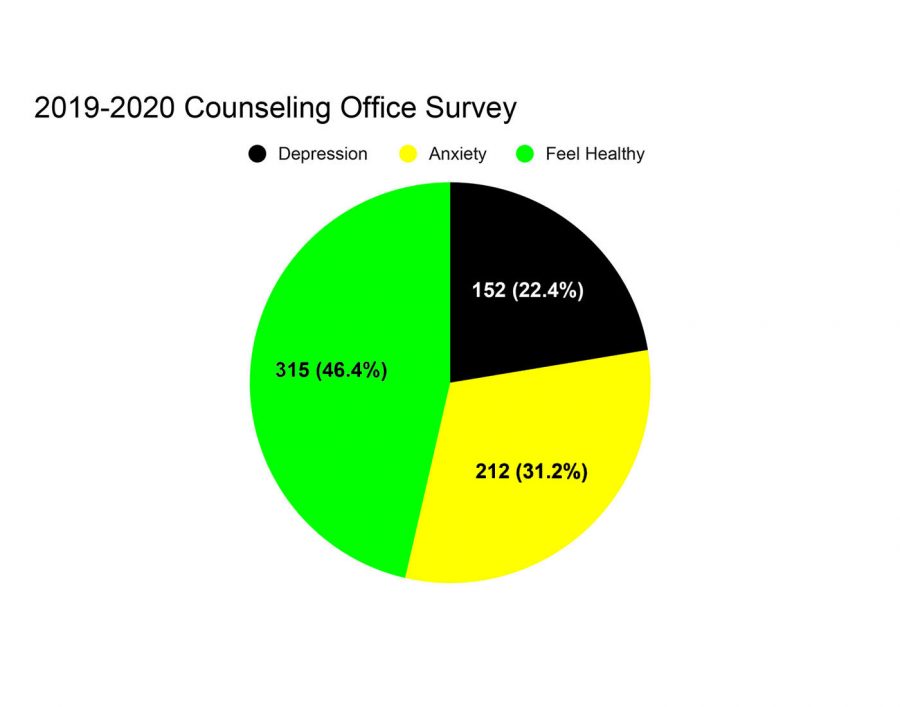Anxiety and depression increase
January 21, 2020
According to the Child Mind Institute, there was a 37 percent increase in the number of students who had a depressive episode from 2005 to 2014. Similarly, from 2007 to 2012 there was a 20 percent increase in the number of anxiety disorders reported according to Claire McCarthey, MD, at the American Academy of Pediatrics. To put those time frames in perspective Facebook was released in 2004, followed by the release of Twitter in 2006. The upward trends of anxiety and depression correlate with the rise in popularity of social media.
At OHS, 661 students were surveyed; of those students, 152 reported self-diagnosed depression, and 212 reported self-diagnosed anxiety. This is a large percent of the student body that has issues with depression and anxiety. OHS Psychologist Brian Price said, “There has been an increase in mental health concerns in youth in the 26 years that I’ve been doing this job. Not to say 26 years ago students didn’t have mental health concerns, but it’s a much higher rate now than it used to be.” In addition, there has been an increase in the number of conflicts that happen online. Assistant Principal Hollie Jeska said, “About About 90-95 percent of the conflicts that we deal with is because of social media.” The increase in conflict which includes bullying could be one reason the rates of depression have increased as much as they have.
HEALTHY MANAGEMENT
There are proactive steps that teens can take to manage their social media usage in a healthy way. Social media users should set aside allotted times throughout the day that are free from the screen. These breaks may include dinner, homework or study time, and before sleeping. It can help to stay away from social media during these times by turning notifications off.
It can be beneficial to realize how much time out of the day is being spent on social media that could potentially be spent somewhere else. Many phones currently have screen usage trackers, where the time spent on each app is displayed. Additionally, users can set a time limit for each app, that can remind them when the time is up. If social media addiction is difficult to control by the user themselves, they can consider a “digital detox”, where a full 24 hours is free from the phone. Teens can give their phone to someone they trust to keep safe, which will keep them from caving into using it.
Teens need to realize that screen and social media management are extremely important to consider healthwise. Junior Lily Sampson said, “If I feel like social media is taking up too much space in my life, I usually just delete my apps.” If teens make the right steps towards their health, social media can be a productive tool that connects teenagers together positively.

